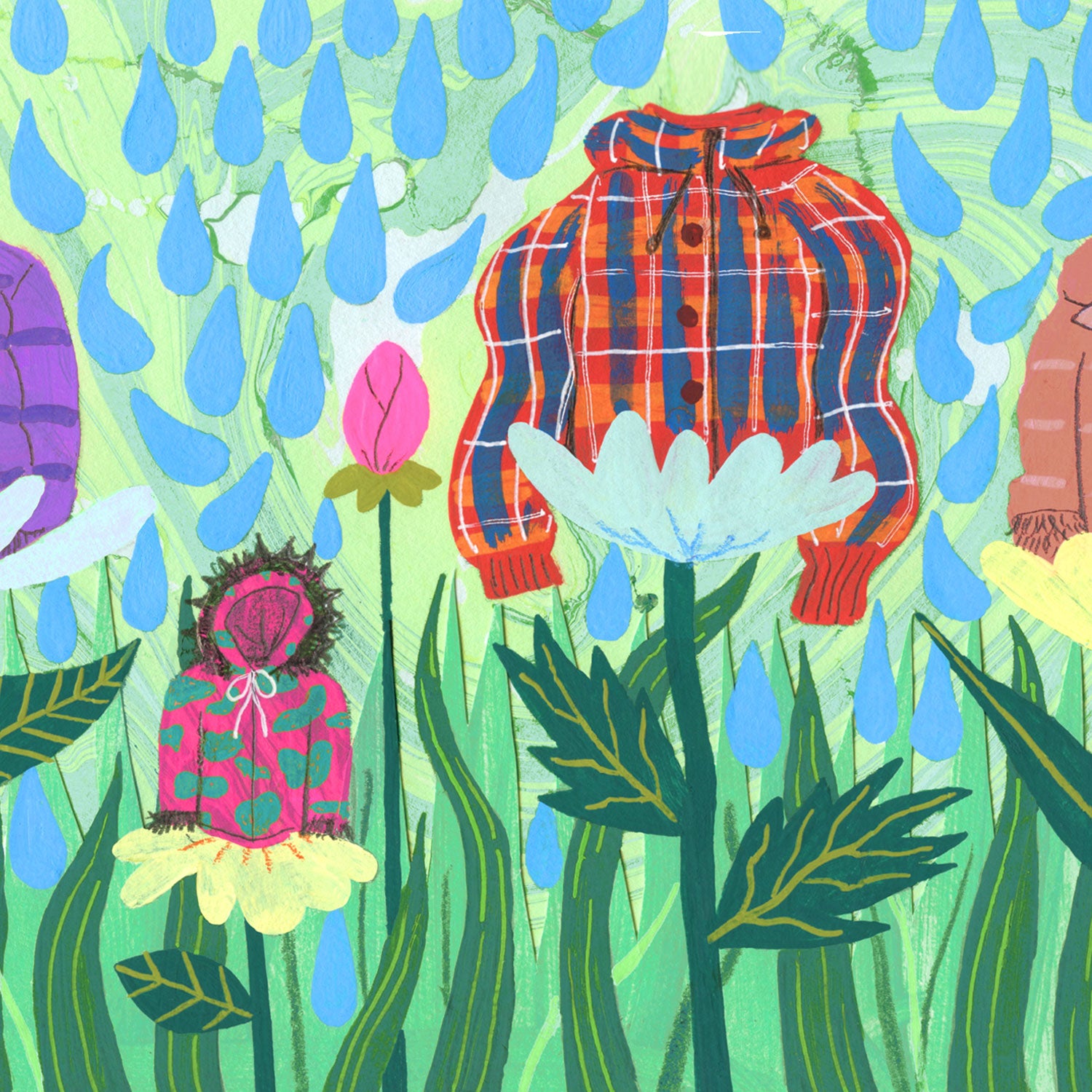One day in July╠ř2017, the shake machine, which tests water resistant properties of hydrophobic down, had been going for 2,000 minutes. Samantha Lee, a then 21-year-old╠řintern at bulk down supplier╠řSustainable Down Source (SDS), knew she was onto something. So far, the test results indicated╠řthat 33 hours of rain╠řwouldnÔÇÖt rob the╠řfeathers, which had been treated with a eco-friendly Durable Water Repellent (DWR), of their insulating properties.
But there wasnÔÇÖt time for Lee to celebrate. Just as she realized she might have found the answer to a question thatÔÇÖs been plaguing the outdoor industry for years, a lightning bolt struck the companyÔÇÖs headquarters in Cincinnati, Ohio, setting part of the building on fire and causing some of the companyÔÇÖs electronics╠řto go haywire.
Everyone evacuated, including Lee, who forgot her lab notebook. She texted her manager, Caroline Zapf, chief sustainability officer for SDS, which produces hydrophobic down under the name╠ř, something to the effect of ÔÇťWell, the good news is, the shake machineÔÇÖs still going and has surpassed 2,000 minutes. Bad news: the buildingÔÇÖs on fire.ÔÇŁ
ItÔÇÖs a story with a happy endingÔÇöor, perhaps, a beginning. Lee had scored big.
She had created a DWR╠řtreatment that performed╠řextraordinarily╠řwell: it was╠řthird-party tested to withstand 33 hours of constant rain, compared to╠řDownTekÔÇÖs original╠řformula, which was only rated for 16.7 hours. More remarkably, it contained zero PFCs, (short for perfluorocarbons), the harmful and non-biodegradable╠řchemicals that the outdoor╠řindustry had heavily relied on to make apparel water resistant up to this point, but performed just as well if not better.
DownÔÇÖs weakness is moisture. Get it wet╠řand it compresses, losing its renowned insulating powers. Companies have long turned to DWR treatments╠řthat contain╠řPFCs╠řto bolster it against moisture, but at an environmental cost. So a╠řPFC-free treatment that actually repels water is somewhat of a holy grail.
This wasnÔÇÖt Sustainable Down SourceÔÇÖs first attempt at PFC-free. The company created a╠řZeroPFC╠řline in 2014, which was environmentally successful but less effective at repelling water. They╠řspent several years╠řresearching alternative, PFC-free down coatings to replace the╠řZeroPFC╠řline.╠řLee came up with her╠řformula, which uses╠ř╠ř(rated safe for both humans and the environment)╠řchemicals, in one summerÔÇÖs worth of work. Moving forward, DownTek will produce only PFC-free down filling, treated with LeeÔÇÖs DWR. The company will nix╠řPFCs from the production of about half a million pounds of hydrophobic down this year alone. (It’s worth nothing that many major brands, including Big Agnes, Brooks-Range, and L.L. Bean, use DownTek╠řin their products.)
In the grand scheme of the mounting horrors we inflict on the environment every year, DownTek is just one so-called ÔÇťingredient brand.ÔÇŁ
This isnÔÇÖt the first brand to release PFC-free DWR, either.╠řNikwax launched its PFC-free hydrophobic down in 2013, in collaboration with , but has long made PFC-free DWR treatments. The brand looked into PFC chemistry in the ÔÇś90s, when it started proliferating in the industry for its performance, says Heidi Dale Allen, marketing VP at Nikwax. But then research indicated that PFCs are harmful for people and the environment. Since Nikwax is an after-market care product that people apply themselves in their homes, they decided the risks outweighed the benefits, and they steered in the opposite direction.╠řFj├Ąllr├Ąven stopped using PFCs╠řin its rain shells in 2015. DownTek╠řdebuted Sustainable╠řDown SourceÔÇÖs ZeroPFC╠řin 2016, though╠řit╠řperformed about one-third as well as its original formula.╠řLast year, Columbia released its first PFC-free rain jacket, the Outdry Ex Eco Rain Shell, and this year, Marmot came out with its own.
In the grand scheme of the mounting horrors we inflict on the environment every year, DownTek is just one so-called ÔÇťingredient brandÔÇŁ in one fairly small industry. Even the whole of the outdoor industry is barely a blip on the scale of the work that needs to be done to eliminate PFCs in manufacturing and chemical production, says Chris Dreszig, head of marketing and communication for Bluesign. Since PFCs are╠řextremely effective at repelling water, grease, and stains,╠řtheyÔÇÖre ubiquitous in household items like pots, pans, and carpets, as well as in technical apparel and coatings on airplanes.
Still, progress is progress.
ÔÇťWe should really be leading the entire consumer goods market,ÔÇŁ╠řsays╠řDale Allen. She added that even though DownTek is a direct competitor of theirs, she still sees their new formula as a win. ÔÇťAs long as weÔÇÖre all working in the same direction, that makes me happy.ÔÇŁ
WeÔÇÖve forced some over-engineering of outdoor apparel.
Patagonia doesnÔÇÖt use DownTekÔÇöor any hydrophobic downÔÇöin its line of gear, but it has committed to jettisoning its use of PFCs by the year 2020. A few other brands have made such goals publicly. VF CorporationÔÇöwhich owns Smartwool, the North Face, Jansport, Eagle Creek, and other iconic brandsÔÇöplans to be PFC-free by 2025.╠řBurton and Jack Wolfskin╠řplan to be PFC-free by 2020.╠ř
But thereÔÇÖs no set goal for the industry, says Beth Jensen, senior director of sustainable business innovation of the Outdoor Industry Association. ThatÔÇÖs in part because DWR╠řthat uses PFCs is still used in so much gear. WeÔÇÖve come to expect╠řmaximum performance as a baseline for satisfactory gear. ItÔÇÖs great to hear that a jacket has been rain-room tested for 24 hours without fail, but few of us ever even come close to pushing our gear to those kinds of limits. In some ways, weÔÇÖve forced some over-engineering of outdoor apparel, says Dreszig.
Jensen acknowledges that brands are challenged by customer expectations as they work to find greener solutions. Educating them is a big part of this process. Right now, many brands say theyÔÇÖre more internally driven and motivated by like companies than they are being pushed by customers to use greener materials or chemistries.╠řRegulations have also changed. As research has proven the harmful impacts of chemicals like PFCs, certain forms have been banned by government agencies in the U.S. and abroad.
ÔÇťThis is such a big deal in our industry,ÔÇŁ says Matt Dwyer, director of materials innovation for Patagonia. Patagonia customers have no issues asking hard questions, but ÔÇťby the time a customer is asking us for something like this, weÔÇÖre too late.ÔÇŁ
ItÔÇÖs unclear how long the road is to being completely PFC-free, largely because the industry doesnÔÇÖt want to rush into solutions without longevity, Jensen says. The best thing you can do for the environment╠řis to buy stuff that lasts long enough that you wonÔÇÖt need to replace it, preventing more products from being made later down the line.
ÔÇťIf you use a product only once, the impact is very high. If you can use it 10, 100, or 200 times, thatÔÇÖs better,ÔÇŁ Dreszig says. ÔÇťItÔÇÖs not just a step back, [brands] have to produce products that are really needed by consumers. When sustainability starts by design, designers should actually think much more about what theyÔÇÖre doing in terms of sustainability.ÔÇŁ


